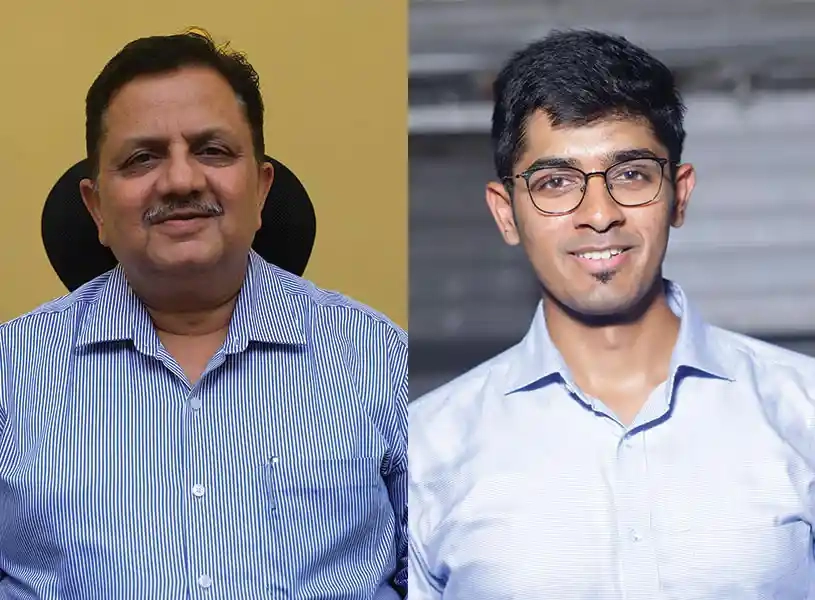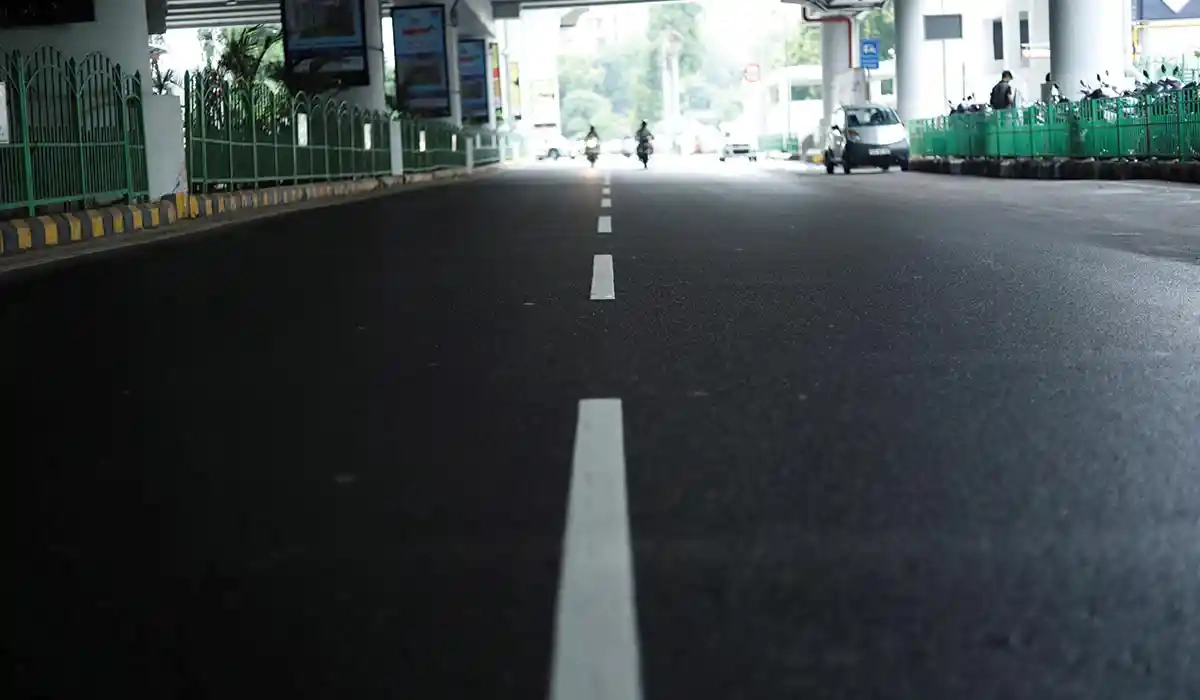Descon Infrastructures Helping Drive Infra Development

From a consultancy firm to an urban infrastructure developer, how challenging has been Descon’s growth story?
Design & Construction is what DESCON stands for and over the years, the company has transitioned from providing consultancy services to becoming a highway maintenance and road safety solution provider. The foundation for Descon Infrastructures was laid in 1992 with the setting up of a manufacturing facility for making road safety products and in 2008 we launched thermoplastic road marking solutions which strengthen our position as a road safety product supplier.
Road maintenance and safety, as an important part of highway infrastructure, have become even more important with the government working at lightning speed to develop highways across the country. In fact, both the Central and State governments are focused on developing highways and affordable housing besides other major infra projects. We are also transforming Descon into a major Highway Construction & Maintenance company along with a strong footprint in construction of housing, commercial and other infra projects.
What are Descon Infrastructures’ areas of expertise and its initiatives in promoting innovative and sustainable solutions to optimize time and cost benefits for clients?
We have three verticals, Highway Road Safety & Maintenance, Urban Parking Solutions, and Urban Infrastructure Construction. As a product manufacturer and a service provider, we are streamlining our production and services to enable efficient planning of procurement and production cycles, and standardization in all our processes, so that we can offer standard quality products which meet industry standards.
We are also undertaking skill development of our workforce so that we can add value to each member in the value chain. Our aim is to enrich the quality of the infrastructure ecosystem with smart, safe, and integrated solutions.
How do you see your involvement in road and highway projects which are government’s prime focus and what road map is the company formulating for its sustainable growth in the sector?
We have set a target to take up minor highway maintenance works and achieve a turnover of Rs. 100 crore within the next two years and Rs 500 cr by 2025. In the pipeline are two projects of the National Highway Authority of India (NHAI), which are being executed.
Our roadmap for achieving sustainable growth in the infrastructure sector is based on two pillars: investment in human resources and advanced pavement technologies. Smart individuals who are willing to build a career in the infrastructure space will have the opportunity to work on technologies like SMA, micro-surfacing RAP and FDR. With the technological support and resources available at our end, it becomes easier to implement leading global technologies in the Indian ecosystem.
Please enumerate the products and solutions offered by Descon for road construction.
Our range of products and solutions include the following:
- Bitumen & Emulsions
- Road Safety Signage
- Road Marking Paint & Applications
- Metal Beam Crash Barriers
- Road Safety Furniture Items
- Road Safety Audit
- Highway Maintenance
What are the challenges in India’s parking system and what solutions is Descon offering?
In developed nations, parking is sold as a commodity whereas in India it is looked upon as a right. The challenge is therefore multifold. The first step to improve the ecosystem is strict adaptation of the building bylaws wherein the required space is allocated for parking. This will help us decongest the streets.
We are also transforming Descon into a major Highway Construction & Maintenance company along with a strong footprint in construction of housing, commercial and other infra projects
We are offering a parking system in collaboration with Sotefin Parking S.A. Since increased land costs tend to push parking project costs higher, we are able to take away the circulation space needed in a conventional parking, thereby reducing the project cost. For example, the parking system installed at the office of Ministry of Road Transport & Highways in New Delhi uses an area of approximately 3000 sqft; this G + 7 parking structure has a capacity of 112 cars. Hydraulic systems are used to lift and carry the cars to the available spot from the entry and then back to the exit. The entire operation takes 90–120 seconds. This is the biggest advantage when planning a parking place in the heart of an urban settlement.
Price is a challenge in the Indian market as is a reluctance to adopt new technologies. Please comment.
The ability to overlook quality standards while pricing a product is by far the biggest challenge. It is a buyer’s right to demand the minimum price for a product or service but the quality of service or product needs to be ascertained by a certain mechanism. This would ensure safety and quality throughout the chain – from quality in manufacturing, installation, and assembly to SOPs for safety of personnel on-site and adherence to government policies for labor welfare. When we bypass any of these, the result is a sub-standard quality product or service.
Our aim is to enrich the quality of the infrastructure ecosystem with smart, safe, and integrated solutions
MORT&H has taken major steps to promote new technologies into highway infra construction, but new technologies come with greater responsibility and the right mindset. If we use new technology over the older ones, it must be ensured that the time, material and labor costs are as per the standards set for them.
Descon has several technology tie-ups with international companies. Please enumerate.
- We have distribution tie-ups with SHELL Tikitar for their Bitumen and its derivatives for U.P
- Orafol India and Avery Dennison for Reflective Sheeting
- JRS Germany for Cellulose Fibers for SMA, Warm Mix & RAP solutions
- We are manufacturing Thermoplastic Road Marking material under our brand SUNMARK
- We are partners with Graco for Road Marking equipment
- For Robotic Parking Solutions, we are partnered with SOTEFIN Parking S.A., Switzerland.

In your view, what is driving the infra construction industry of India?
There is tremendous synergy being witnessed in the infrastructure construction industry. The entire ecosystem has been progressively set up to boost infra development and this is clearly visible in the progress that has been achieved in the last decade. The industry has adopted the best practices from all over the world and is delivering quality results. We can see international petroleum products leader like Shell and Total entering India.
If we use new technology over the older ones, it must be ensured that the time, material and labor costs are as per the standards set for them
The primary driver in this space has been the Ministry of Road Transport & Highways (MoRTH) and its off shoots NHAI and NHIDCL. With its goal to spearhead highway infrastructure development, the Ministry has transformed the space by simplifying participation criteria, implementing transparent mechanisms, and structuring improved development models like EPC and HAM etc.
Educational and research institutions like the Central Road Research Institute (CRRI) and the Indian Institute of Technology (IIT) have simultaneously initiated several research works to help introduce global technologies like Stone Mastic Asphalt (SMA), Cold Mix, Reclaimed Asphalt Pavement (RAP), and Full Depth Recycling (FDR) in the Indian infrastructure space.
The Government plans to step up road construction from the current 40 km/day to 100km/day, build 100 smart cities and metro projects in over 50 cities; and provide housing to all. But do we have the technology, the workforce, the expertise, and the machinery to make these plans a reality?
Holistic development is what is needed and as India aims to step up its infrastructure development, the required resources like skilled workforce, advanced technology and machinery are also emerging. IIT Roorkee has recently signed an MoU with CSIR – Central Road Research Institute to form a nucleus for promoting superior quality manpower across several fields in the road and transportation sector.
With the ‘Make in India’ initiative launched by the Government, we are observing higher foreign investments in India. This has enabled the transfer of advanced technology from developed economies like Germany, Japan, etc. to their Indian counterparts, thereby enabling us to be better equipped for the next phase of development.
NBM&CW January 2022


















